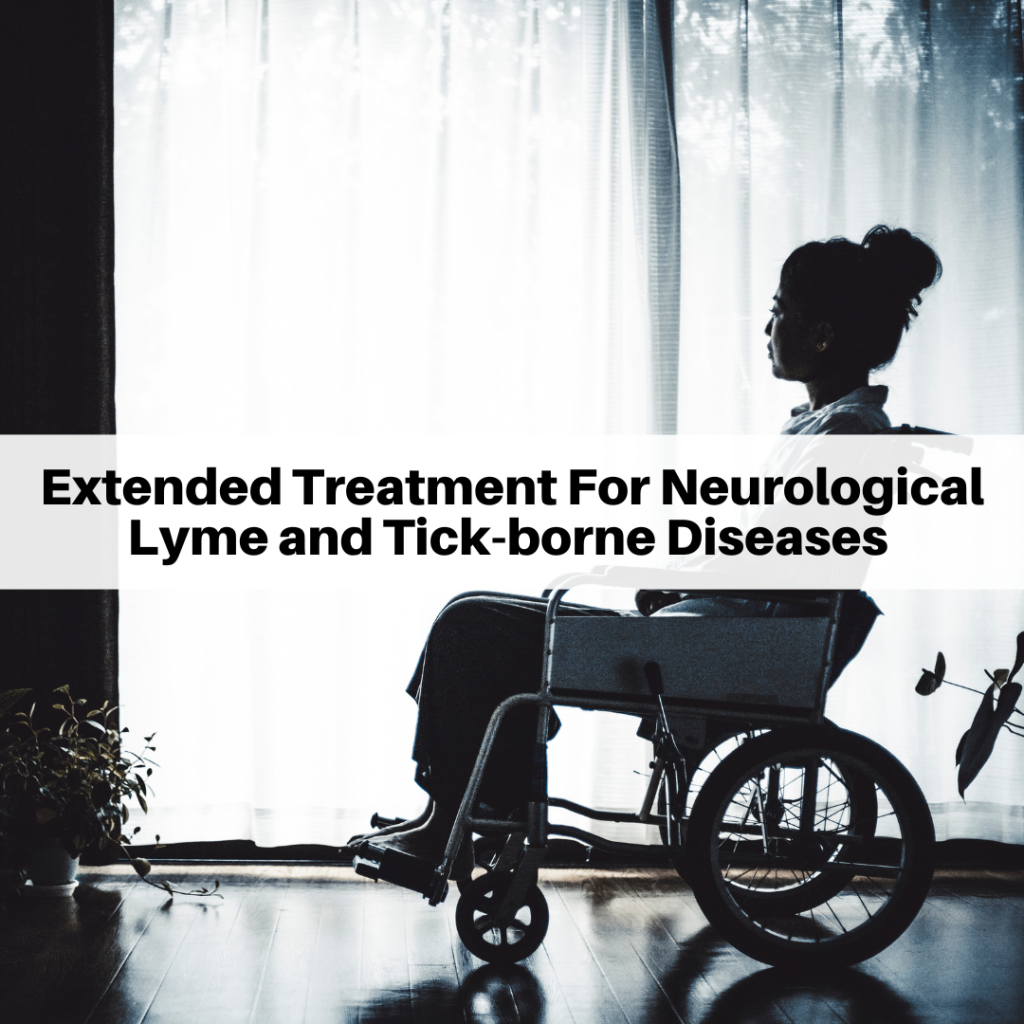Paralyzed by Lyme, they were helped with combo treatments

A new study from France looks at the use of combination antibiotics and anti-parasitic treatments in patients with limb paralysis as a result of tick-borne infections, including Lyme disease.
Approximately 70% of the patients in this study showed complete remission of symptoms after long-term treatment—a statistic that lines up with the MyLymeData treatment study.
The paper entitled, Complete Remission in Paralytic Late Tick-Borne Neurological Disease Comprising Mixed Involvement of Borrelia, Babesia, Anaplasma, and Bartonella: Use of Long-Term Treatments with Antibiotics and Antiparasitics in a Series of 10 Cases was published in Antibiotics.
The inclusion criteria for this study required a score of 4 or more on the Kurtzke EDSS disability scale; positive blood tests for one or more tick-borne pathogen (including Borrelia burgdorferi, Babesia, Anaplasma or Bartonella); and chronic general symptoms including fatigue, pain, and cognitive deficits lasting six or more months.
The Extended Disability Status Scale (EDSS) is a tool commonly used to quantify the level of disability in patients with multiple sclerosis. The EDSS grades six bodily functions, including visual, brain, bowel/bladder and sensory functions, as well as the patients’ ability to walk and take care of themselves.
All 10 of the patients that qualified for this study were severely disabled with partial or complete paralysis in at least one limb. Five of the 10 required a wheelchair for mobility, and four required assistive devices like walking sticks to get around.
Complete remission for 7 out of 10
Following extended treatment, seven out of 10 patients (70%) showed complete remission of symptoms. Among the nine patients with positive Borrelia serology (along with co-infections), 77% obtained complete remission.
The treatment administered varied according to the patient’s infection profile. The majority of the patients received repeated oral regimens of azithromycin-doxycycline and azithromycin-doxycycline-rifampin plus a minimum of three 35-day cycles of IV ceftriaxone. The eight patients co-infected with Babesia (a parasite) were also administered anti-parasitic cycles of atovaquone–azithromycin. The mean duration of treatment was 20 months +/- 6 months. (Trouillas 2023)
Historically, patients with late-stage Lyme disease have poor outcomes to single regimens of 10-day IV ceftriaxone. (I’ve previously written about brain inflammation, and small fiber neuropathy found in patients with continuing symptoms after short-term treatment for Lyme disease.)
And we have decades of strong evidence that under-treatment with single antibiotics is consistent with persistent infection in animal studies. (Embers 2012)
Two weeks isn’t enough
As far back as 1990, Dr. Allen Steere co-authored a paper on patients with persistent late-stage neurological Lyme disease.
In this paper Dr. Steere and his co-authors state:
Months to years after the initial infection with B. burgdorferi, patients with Lyme disease may have chronic encephalopathy, polyneuropathy, or less commonly, leukoencephalitis. These chronic neurologic abnormalities usually improve with antibiotic therapy.
…
Six months after a two-week course of intravenous ceftriaxone (2 g daily), 17 patients (63 percent) had improvement, 6 (22 percent) had improvement but then relapsed, and 4 (15 percent) had no change in their condition.
…
Six months after treatment, more than one third of the patients either had relapsed or were no better. In addition, more than half had previously received antibiotic therapy thought to be appropriate for their stage of disease and still had progression of the illness. The likely reason for relapse is failure to eradicate the spirochete completely with a two-week course of intravenous ceftriaxone therapy. (Logigian 1990)
MyLymeData
In fact, the MyLymeData study validates that longer antibiotic treatment durations are associated with moderate to a very great deal of improvement. (Johnson 2020)
MyLymeData is currently the largest observational study of patients using real-world data to analyze the response to treatment of chronic Lyme disease patients. The majority of patients (57%) reported treatment durations of four or more months,
The results of this new French study demonstrate the importance of clinicians being able to continue treatment until a patient’s symptoms have resolved. It is clear, at least in this study, that the presence of co-infections greatly compounds one’s disease progress and treatment options.
LymeSci is written by Lonnie Marcum, a Licensed Physical Therapist and mother of a daughter with Lyme. She served two terms on a subcommittee of the federal Tick-Borne Disease Working Group. Follow her on Twitter: @LonnieRhea Email her at: lmarcum@lymedisease.org.
References
Embers ME, Barthold SW, Borda JT, Bowers L, Doyle L, Hodzic E, et al. Persistence of Borrelia burgdorferi in Rhesus Macaques following Antibiotic Treatment of Disseminated Infection. PLoS ONE. 2012;7(1):e29914. Available at: http://www.plosone.org/article/info%3Adoi%2F10.1371%2Fjournal.pone.0029914.
Johnson, L.; Shapiro, M.; Stricker, R.B.; Vendrow, J.; Haddock, J.; Needell, D. Antibiotic Treatment Response in Chronic Lyme Disease: Why Do Some Patients Improve While Others Do Not? Healthcare 2020, 8, 383. https://www.mdpi.com/2227-9032/8/4/383
Logigian EL, Kaplan RF, Steere AC. Chronic neurologic manifestations of Lyme disease. N Engl J Med. 1990 Nov 22;323(21):1438-44. doi: 10.1056/NEJM199011223232102. PMID: 2172819.
Trouillas P, Franck M. Complete Remission in Paralytic Late Tick-Borne Neurological Disease Comprising Mixed Involvement of Borrelia, Babesia, Anaplasma, and Bartonella: Use of Long-Term Treatments with Antibiotics and Antiparasitics in a Series of 10 Cases. Antibiotics. 2023; 12(6):1021. https://doi.org/10.3390/antibiotics12061021




















We invite you to comment on our Facebook page.
Visit LymeDisease.org Facebook Page